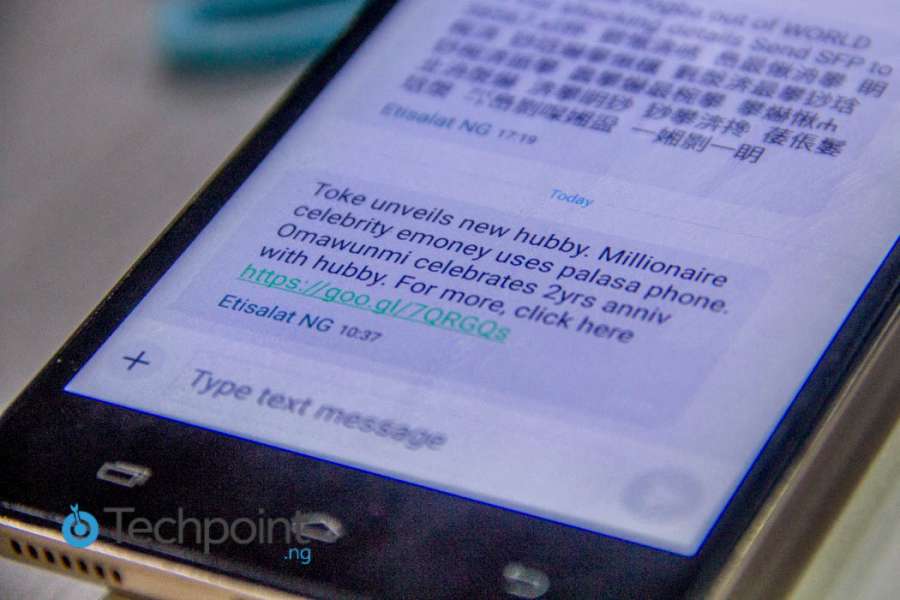
Every day, many mobile phone users in Ghana receive messages on events, promotions, products, services, social media links and other business offers they never asked from their mobile network operators.
More often than not, this phenomenon becomes a ‘nuisance’ to subscribers, especially, when an active response to such messages ends them in bills and undesirable contractual agreements that are technical in nature. The illiterate subscribers are the worst of victims.
Complaints of reduction of credit accounts balance for unknown reasons have become commonplace among many innocent subscribers, mostly, as a result of their response to these unsolicited messages technically known as spam.
For a long time, the national regulator, the National Communications Authority (NCA), has been quite silent about the concerns of the masses, albeit, a recent report in the media that the NCA has cautioned operators to be wary of the unregulated commercial messages sent to network users with or without the operator’s knowledge.
It appears that the phenomenon is characteristic of many telecom platforms across the world. Unsolicited texts landing in handset inboxes as at 2009 were increasing at a rate of five per cent a year in the UK, according to research from Airwide, a mobile messaging technology provider.
Reports say to prevent further correspondence, mobile users had to text back “stop” at a cost to themselves or risk mistakenly signing up for an expensive premium-rate service or being duped into text correspondence that could trigger some payments to anonymous businesses. In North America, much less than one per cent of SMS messages were spam in 2010, while in parts of Asia up to 30 per cent of messages were spam.
Spamming is not considered legal under common law in many countries. The US, Australia and the EU are some of the popular jurisdictions with specific SMS spam regulation and fines. For instance, in a 2008 settlement, the violators of spams agreed to pay $150 to each spam recipients.
In a 2010 class action settlement of Satterfield v Simon & Schuster, a case that reached the US Ninth Circuit Court of Appeals, defendants agreed to pay $175 to each spam recipient. In response to Satterfield, entities that make money sending mobile phone spam formed the Mobile Advocacy Coalition (MAC) to lobby the government to legalize the spamming activity.
Unlike other countries where regulations on spamming or unsolicited text messaging is expressed, it seems that the national regulator in Ghana does not have any clear-cut policy regarding spamming.
The sequential question is, does the NCA have such regulations for monitoring and preventing ‘such behaviours? If there are, are they public information?
Unlike many other countries, Ghana seems to rely more on the GSMA Code of Practice, to which Ghana is a signatory, in order to regulate the spate of spamming in the telecom terrain.
What is noteworthy is that, GSMA Code of Practice is quite based on ethics not regulation. Hence, operators can choose to abide by it or not. To ensure an open way of dealing with the situation, the NCA needs to make public, if there are any, the aspects of telcos licensing agreements that stipulate regulations on curtailing spamming activities through telecom networks.
With this, the telecom consumer-public would be abreast of their rights to spam-free telecommunication services, spam reporting procedures, cost or no cost implications in reporting and how to abstain from spams.
In the UK, regulation covering electronic data privacy, enforced by the Information Commissioner’s Office (ICO), says mobile phone customers should only receive a spam or marketing text if they have handed over their number to another party and allowed it to be passed on, a practice known as “opting in”.
In many of the cases in Ghana, mobile subscribers receive spams through the social networks like Facebook, twitter, LinkedIn, yahoo mail among others. Since these networks offer slots for mobile phone numbers, hackers are able to break into mails and other social network addresses and electronically capture the phone numbers of their victims, thus, the database for their spamming activities. This apparently poses a wide range of serious security threats for victims of spamming.
When it comes to spams caused directly or indirectly by network operators, confidentiality between operators and their subscribers are breached, especially in the case where third parties ride on the platform of the telcos to reach their target audiences.
Meanwhile, signatories to the GSM Code of Practice are, among other requirements, enjoined to work co-operatively with other mobile operators to address spam issues, provide customers with information and resources to help them minimise the levels and impact of mobile spam. They are also required to undertake other anti-spam activities to minimise the level and impact of mobile spam as well as encourage governments and regulators to support industry.
Signatory-operators also commit to include anti-spam conditions in all new contracts with third party suppliers including a commitment to provide customers with obvious, clear and efficient means to opt-out of receiving further SMS or MMS marketing communications.
Often, mobile users opt-in to receive text messages and may forget they have done so. Under such circumstances, the communications are not illegal and, therefore, permitted. Hence, there is a responsibility on stakeholders to educate customers on the issue and for service providers to explain to those that already have opted in to the lists that they are receiving permission-based marketing, not Spam.
In the US, Operators such as AT&T, T-Mobile, Verizon, and Sprint allow subscribers to report spam by forwarding the spam messages to a short code. Another approach to reducing SMS spam that is offered by some carriers involves creating an alias address rather than using the cell phone’s number as a text message address. Only messages sent to the alias are delivered; messages sent to the phone’s number are discarded.
Most cell phone providers offer the option of completely disabling all text messaging services on a user’s account. This extreme solution, however, is satisfactory only for those users who have neither the need nor the desire to utilize SMS at all. Another countermeasure is to use a service that provides a public phone number and publishes the SMS messages received at that number to a publicly accessible website.
In June 2009, three major Chinese carriers—China Mobile, China Telecom and China Unicom—imposed limits on text messaging in order to crack down on spam SMS. Under the restrictions, a phone number can send no more than 200 messages per hour and 1000/day on weekdays.
It is crucial that the national regulator leads the fight against spamming on telecom consumers in the country. In a concerted fashion, the Ministry of Communications, acting through the regulator, the telecoms chamber, operators and other third party operators, should sit around the table and discuss the way forward against the activities of spammers that are costing the ordinary Ghanaian telecom consumers drops of hard earned money.






















